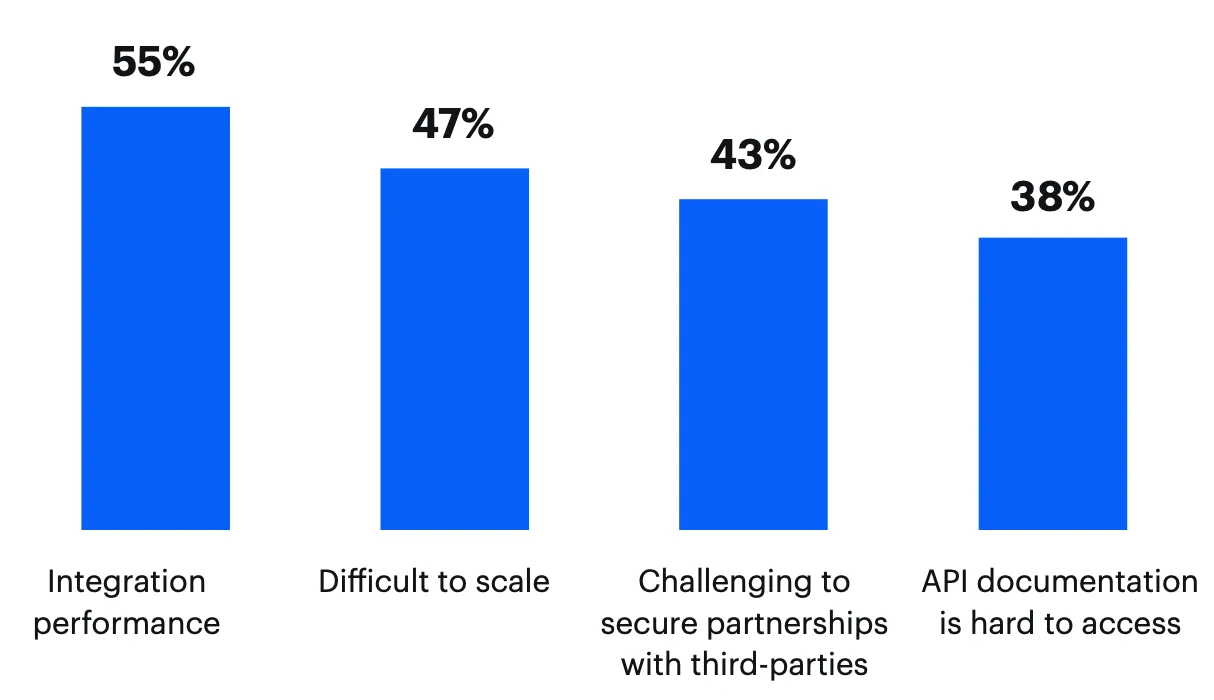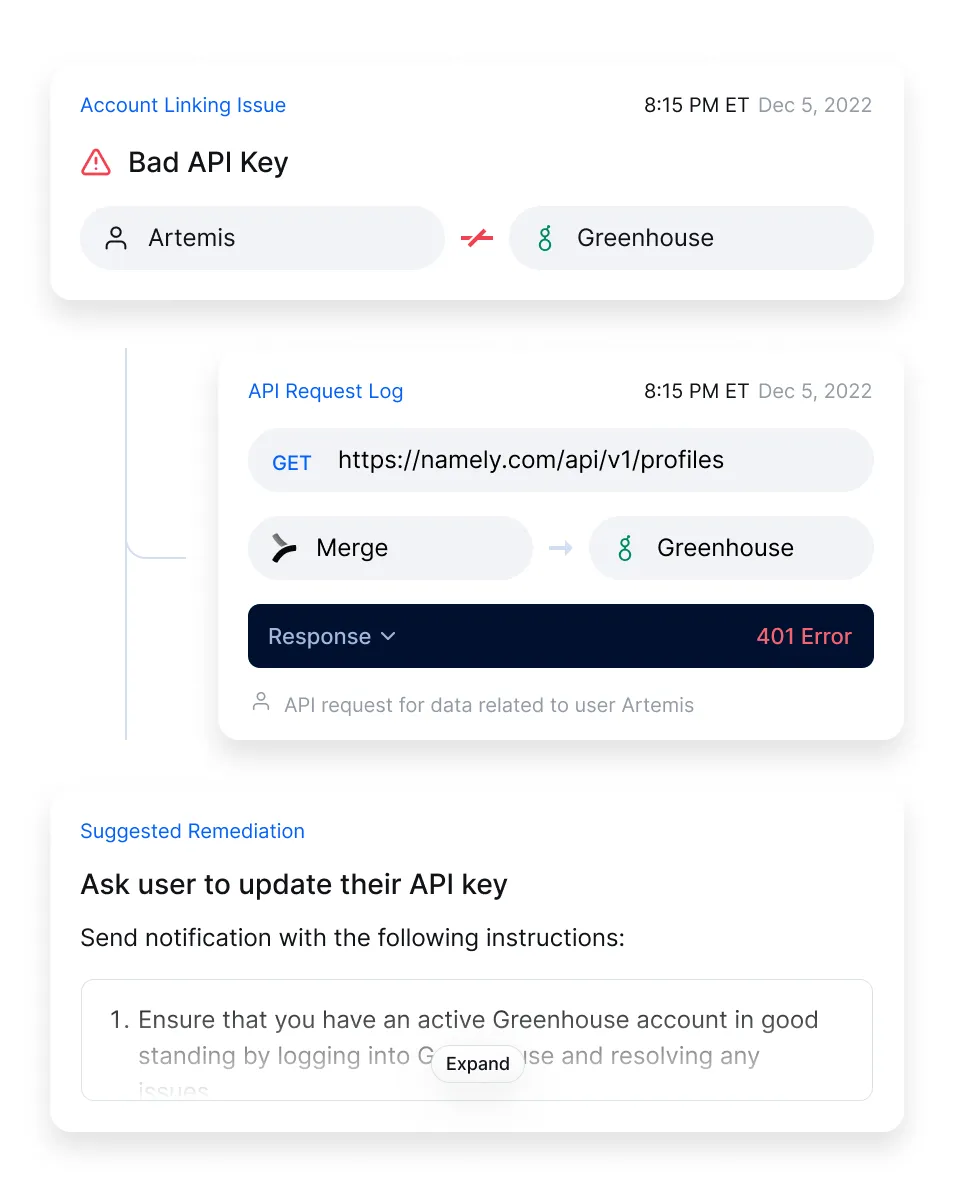5 common integration issues (according to our research)

As organizations build and maintain integrations, they’ll inevitably run into serious issues.
We identified many of them when we surveyed hundreds of product managers and engineers as part of our State of Product Integrations report.
When it comes to building integrations, for example, we uncovered the following issues:

And when it comes to maintaining integrations, we discovered several more challenges:

We’ll break down some of the most common issues from our research so that you can better prepare for and avoid them. But first, let’s align on the definition of an integration issue.
What is an integration issue?
It’s any issue associated with either building or maintaining an integration. The source of an issue can be on the API provider’s or API consumer’s end.
Frequent integration issues
Here are a few of the top integration issues to be aware of.
Integration performance
Integrations can break for a seemingly endless number of reasons. For instance, if an API response comes back in a different format (e.g., an array) than what you expected and accounted for in your code base (e.g., a string), your integration can break.
In addition, without a robust and comprehensive process in place to identify, diagnose, and resolve an integration issue, it can persist for a long stretch of time, leaving a lasting effect on everyone involved.
Related: Common API integration challenges
Difficult to scale
Every integration requires its own cycle of research, scoping, development, and maintenance, and there’s little-to-no overlap in these areas across integrations.
Given how complex and tedious it is to build and maintain each integration, coupled with the fact that you likely have limited developer resources available to allocate toward this work, it’s difficult—if not impossible—to scale your integrations in-house effectively.
API documentation is hard to access
API documentation is notorious for being mediocre.
Among other issues, this type of documentation is often incomplete, difficult to navigate, out of date, and poorly written, making it difficult to rely on when building and maintaining a given integration successfully.

Related: A guide to reading API docs
An integrated application, or a feature within the app, gets discontinued
SaaS applications, or the specific features they offer, constantly get deprecated.
Forcing your engineers to keep tabs on the status of these applications and features, make contingency plans in the event that they get deprecated, and implement those contingency plans on time can prove difficult, especially as you scale your integrations.
Challenging to secure partnerships with 3rd-parties
Some API providers require you to form a certain level of partnership just to access their API documentation and sandbox accounts. And while it depends on the provider, these partnerships can cost tens of thousands of dollars per year.
Some API providers are also exceptionally picky about who they accept as a partner, so even if you’re willing to make the necessary investment, you still might not be able to build to a provider’s endpoints.
Handle integration issues effectively with Merge
Merge offers a unified API that lets you add hundreds of integrations to your product through a single build.
Merge also provides integration maintenance support (through its team of partner engineers) to help you offer resilient and performant integrations. And its platform includes Integration Observability tooling that lets your customer-facing employees pinpoint and diagnose integration issues easily and work with affected customers on resolving them quickly.

You can learn more about how Merge can help you manage integration issues successfully by scheduling a demo with one of our integration experts.








.jpg)
